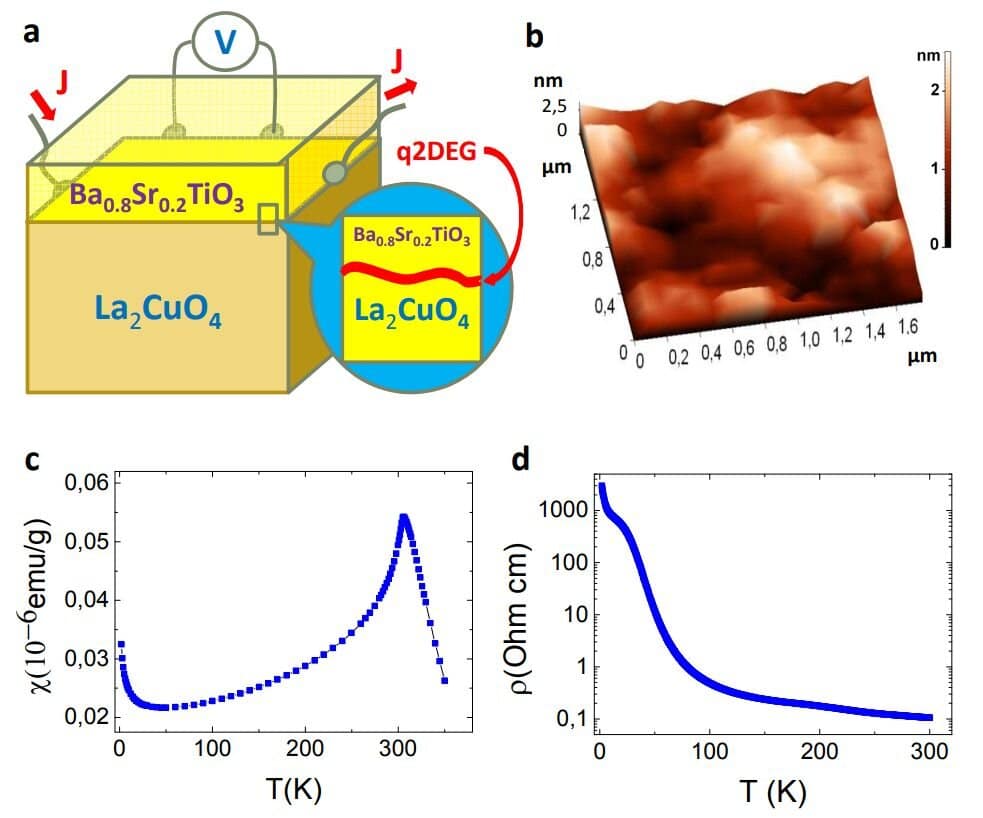Breakthrough in Superconductivity and Ferroelectricity

Scientists have made a significant discovery linking ferroelectric domain walls to superconductivity in two-dimensional van der Waals materials. This groundbreaking research, led by Gaurav Chaudhary from the University of Cambridge and Ivar Martin from Argonne National Laboratory, reveals how specific structural features in these materials enhance electron interactions. The implications of these findings could lead to the development of new superconducting devices and innovative applications in condensed matter physics.
Understanding Sliding Ferroelectricity and Polarisation Reversal
Recent studies have highlighted the phenomenon of sliding ferroelectricity in certain two-dimensional van der Waals materials, such as boron nitride and transition metal dichalcogenides (TMDs). This unique property allows for polarisation reversal when moderate electric fields are applied. The ability to manipulate layer stacking on a large scale significantly alters the electronic properties of these materials.
Researchers have identified domain walls as critical components in this process. These walls serve as boundaries that separate regions with different orientations of ferroelectric polarisation. They exhibit unique characteristics that enhance electron-phonon coupling, which is essential for various electronic applications. The manipulation of these domain walls can lead to significant advancements in material science, particularly in the development of devices that require precise control over their electronic properties.
The implications of sliding ferroelectricity extend beyond basic research. They offer potential pathways for creating advanced materials that can be tailored for specific applications. As scientists continue to explore these properties, the understanding of how ferroelectricity interacts with other phenomena, such as superconductivity, will deepen, paving the way for innovative technological solutions.
Superconductivity Observed at Domain Walls
The research team discovered that superconductivity is transiently enhanced near ferroelectric reversal transitions in materials like molybdenum ditelluride (MoTe₂). This enhancement occurs within hysteresis loops, where domains of varying polarisation coexist. The dynamic fluctuations in these domain walls are identified as the driving mechanism for the pairing interactions necessary for superconductivity.
This phenomenon is particularly intriguing because it is exclusive to two-dimensional TMDs. These materials support interlayer ferroelectricity while maintaining conductivity within their planes. The unique characteristics of the domain walls in these materials create conditions that are conducive to superconductivity, offering a new perspective on how these properties can be harnessed.
Understanding the relationship between ferroelectricity and superconductivity could lead to the development of new materials with enhanced performance. Researchers are excited about the potential applications of these findings, as they could revolutionize the field of superconducting devices. The ability to control superconductivity through structural manipulation opens up new avenues for research and technology.
Future Research and Applications
Chaudhary and Martin believe their findings could lead to the creation of highly controllable superconducting devices. They are currently exploring the systematic design of new superconductors by layering polar materials and utilizing domain wall networks in moiré systems. This approach could significantly enhance the performance and applicability of superconducting materials.
Further investigations are essential to validate their theoretical models. Advanced microscopic simulations will play a crucial role in this process. By refining their understanding of the interactions between ferroelectricity and superconductivity, researchers hope to uncover unconventional mechanisms that could lead to new breakthroughs.
The study has sparked interest among scientists eager to explore the properties of two-dimensional materials. As research progresses, the potential for innovative applications in electronics and materials science becomes increasingly promising. This work marks an important step forward in the quest to harness the unique properties of 2D materials for practical use, paving the way for future advancements in technology.
Observer Voice is the one stop site for National, International news, Sports, Editor’s Choice, Art/culture contents, Quotes and much more. We also cover historical contents. Historical contents includes World History, Indian History, and what happened today. The website also covers Entertainment across the India and World.

